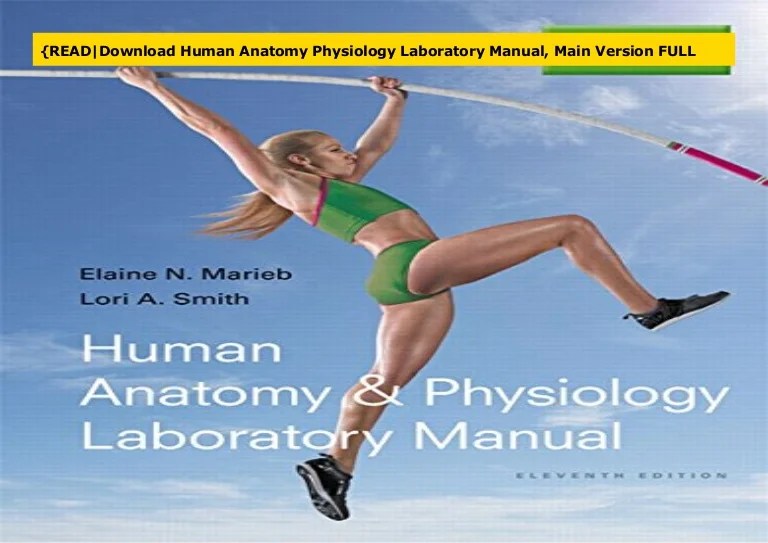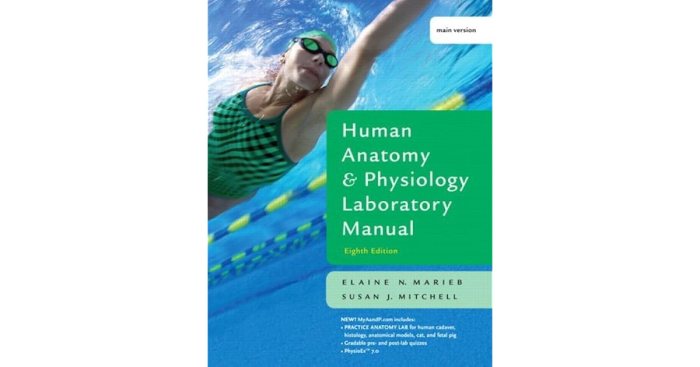Anatomy and physiology laboratory manual answers provide students with a valuable resource for understanding the structure and function of the human body. These manuals offer step-by-step guidance through laboratory exercises, helping students develop essential skills in data collection, analysis, and interpretation.
By providing accurate and comprehensive answers, laboratory manuals empower students to excel in their studies and gain a deeper understanding of human anatomy and physiology.
The anatomy and physiology laboratory manual answers presented in this guide are meticulously crafted to align with the latest scientific research and educational standards. They cover a wide range of topics, including the skeletal system, muscular system, nervous system, and endocrine system.
Each answer is carefully explained, providing students with a clear and concise understanding of the concepts being studied.
1. Anatomy and Physiology Laboratory Manual Overview: Anatomy And Physiology Laboratory Manual Answers

The anatomy and physiology laboratory manual provides a comprehensive guide to the laboratory exercises and activities that students will complete during their anatomy and physiology course. The manual is designed to help students learn the basic principles of anatomy and physiology, and to develop their skills in the laboratory.
The manual is organized into units, each of which covers a different topic in anatomy and physiology. Each unit begins with an introduction to the topic, followed by a series of laboratory exercises. The exercises are designed to help students learn the basic concepts of the topic, and to develop their skills in the laboratory.
2. Laboratory Exercises

The laboratory exercises in the manual are designed to help students learn the basic principles of anatomy and physiology, and to develop their skills in the laboratory.
- Exercise 1: Introduction to the Microscope
This exercise introduces students to the basic principles of microscopy, and teaches them how to use a microscope to observe cells and tissues.
- Exercise 2: The Cell
This exercise introduces students to the basic structure and function of the cell, and teaches them how to identify different types of cells.
- Exercise 3: The Tissues
This exercise introduces students to the four basic types of tissues in the body, and teaches them how to identify different types of tissues.
- Exercise 4: The Integumentary System
This exercise introduces students to the structure and function of the integumentary system, and teaches them how to identify different types of skin.
- Exercise 5: The Skeletal System
This exercise introduces students to the structure and function of the skeletal system, and teaches them how to identify different types of bones.
- Exercise 6: The Muscular System
This exercise introduces students to the structure and function of the muscular system, and teaches them how to identify different types of muscles.
- Exercise 7: The Nervous System
This exercise introduces students to the structure and function of the nervous system, and teaches them how to identify different parts of the nervous system.
- Exercise 8: The Endocrine System
This exercise introduces students to the structure and function of the endocrine system, and teaches them how to identify different types of endocrine glands.
- Exercise 9: The Cardiovascular System
This exercise introduces students to the structure and function of the cardiovascular system, and teaches them how to identify different parts of the cardiovascular system.
- Exercise 10: The Respiratory System
This exercise introduces students to the structure and function of the respiratory system, and teaches them how to identify different parts of the respiratory system.
- Exercise 11: The Digestive System
This exercise introduces students to the structure and function of the digestive system, and teaches them how to identify different parts of the digestive system.
- Exercise 12: The Urinary System
This exercise introduces students to the structure and function of the urinary system, and teaches them how to identify different parts of the urinary system.
- Exercise 13: The Reproductive System
This exercise introduces students to the structure and function of the reproductive system, and teaches them how to identify different parts of the reproductive system.
3. Laboratory Equipment and Materials

| Equipment | Function |
|---|---|
| Microscope | Used to magnify cells and tissues |
| Slides and coverslips | Used to hold cells and tissues for examination under a microscope |
| Dissecting kit | Used to dissect specimens |
| Scalpel | Used to cut specimens |
| Forceps | Used to hold specimens |
| Probe | Used to explore specimens |
| Graduated cylinder | Used to measure volumes |
| Beaker | Used to hold liquids |
| Test tube | Used to hold small amounts of liquids |
| Pipette | Used to transfer liquids |
Commonly Asked Questions
What is the purpose of anatomy and physiology laboratory manuals?
Anatomy and physiology laboratory manuals provide step-by-step guidance through laboratory exercises, helping students develop essential skills in data collection, analysis, and interpretation.
How can I use anatomy and physiology laboratory manual answers effectively?
Laboratory manual answers should be used as a supplementary resource to reinforce understanding of the concepts covered in the laboratory exercises. They should not be used as a substitute for active participation in the laboratory or for independent study.
What are some tips for writing effective laboratory reports?
Effective laboratory reports should be clear, concise, and well-organized. They should include a brief introduction, a description of the methods used, a presentation of the results, a discussion of the findings, and a conclusion.